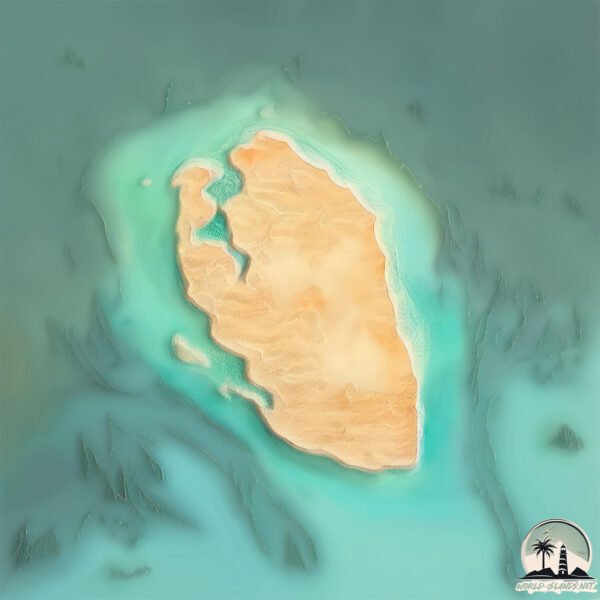Welcome to Faure , a Dry island in the Indian Ocean, part of the majestic Indian Ocean. This guide offers a comprehensive overview of what makes Faure unique – from its geography and climate to its population, infrastructure, and beyond. Dive into the details:
Geography and size of Faure
Size: 53.7 km²Coastline: 40.2 kmOcean: Indian OceanSea: Indian OceanContinent: Oceania
Faure is a Medium Island spanning 54 km² with a coastline of 40 km.
Archipel: –
Tectonic Plate: Australia – A major tectonic plate covering Australia, New Zealand, and parts of the Indian and Pacific Oceans, known for its relative stability and occasional seismic activity.
The geographic heart of the island is pinpointed at these coordinates:
Climate and weather of Faure
Climate Zone: DryClimate Details: Hot Semi-Arid (Steppe) ClimateTemperature: Hot
Climate Characteristics: Features hot summers and mild to warm winters. Receives more rainfall than hot deserts but less than tropical savannas, leading to a somewhat more varied landscape.
Topography and nature of Faure
Timezone: UTC+08:00Timezone places: Australia/PerthMax. Elevation: 17 m Mean Elevation: 10 mVegetation: ShrublandTree Coverage: 30%
The mean elevation is 10 m. The highest elevation on the island reaches approximately 17 meters above sea level. The island is characterized by Plains: Flat, low-lying lands characterized by a maximum elevation of up to 200 meters. On islands, plains are typically coastal lowlands or central flat areas.
Dominating Vegetation: Shrubland
Vegetation: 6 vegetation zones – Very Highly Diverse Island
Infrastructure and Travelling to Faure
Does the island have a public airport? no .
Does the island have a major port? no .
The mean population of Faure is 0 per km². Faure is Uninhabited. The island belongs to Australia .
Continuing your journey, Dirk Hartog is the next notable island, situated merely km away.
Bird’s Eye View of Faure Island, Australia!
Let's go on a mesmerizing aerial journey over Faure Island, Australia, where the untouched wilderness meets the Indian Ocean.
Bird’s Eye View of Faure Island, Australia!
Let's go on a mesmerizing aerial journey over Faure Island, Australia, ...
Let's go on a mesmerizing aerial journey over Faure Island, Australia, where the untouched wilderness meets the Indian Ocean.
Aerial View of Faure Island, Australia!
Check out this stunning aerial view of Faure Island, Australia! Faure ...
Check out this stunning aerial view of Faure Island, Australia! Faure Island is a beautiful, remote island located off the coast of ...
Alfred Faure Island in Google Earth and Google Maps #google #shortsfeed #short #100 #shortsvideo #1k
Antarctica Ocean Alfred Faure Island in Google Earth and Google Maps ...
Antarctica Ocean Alfred Faure Island in Google Earth and Google Maps #google #shortsfeed #short #100 #shortsvideo #1k ...
Australia is classified as Developed region: nonG7: Developed economies outside of the Group of Seven, characterized by high income and advanced economic structures. The level of income is High income: OECD.
News – Latest Updates and Headlines from Faure
Stay informed with the most recent news and important headlines from Faure. Here’s a roundup of the latest developments.
Loading...
Please note: The data used here has been primarily extracted from satellite readings. Deviations from exact values may occur, particularly regarding the height of elevations and population density. Land area and coastline measurements refer to average values at mean high tide.

